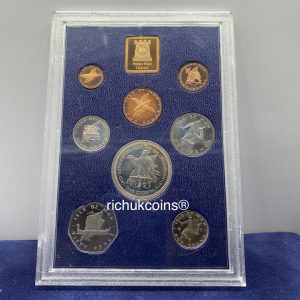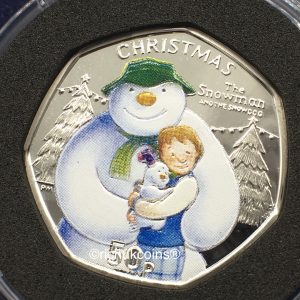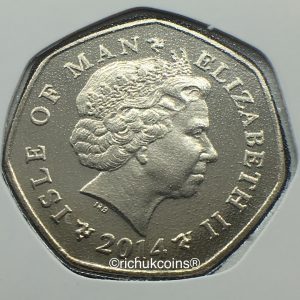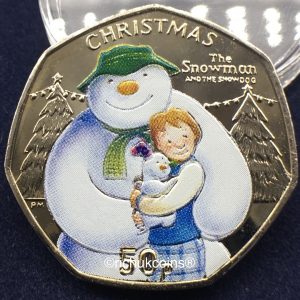Published on
Last Updated on:
In 1997, a UK monometallic £2 coin was changed its own face to a bimetallic £2 coin from monometallic and resized its weight as well, and this is a big change of the modern British coinage since 1971. Of course, the Isle of Man followed suits without any gap in terms of time. There was a rumour either British one or the IOM one about portraits used in 1997. At the end of the day, however, it is NOT true about the rumour, just because we are too young to naive. Here, we are going to cover and exploit the 1997 IOM portraits in depth, and sit tide and enjoy it.
Two different types of IOM a £2 coin from 1997 in terms of metal are existed, virenium £2, and bimetallic £2. Under bimetallic £2, obverse with small portrait and with large portrait are co-existed. So, the first rumour it is: they mistakenly used a wrong portrait on bimetallic coins. Let me provide some information before you make your own solid answer. Firstly, it is a soft connection between virenium and bimetallic (i.e., metals with past and future). Secondly, they keep things separated strictly between circulating coins and circulating commemorative coins during the period of the sporting change theme and also echoes British £2 coin same year. Thirdly, most importantly, it is to reflect the symbol of the Isle of Man triskelion (i.e, the three legs). This simply echoes the 1979 privy t and the tri-£1 coins set in 1979 as well. The reverse of a £2 coin depicts 3 well-known race cars, E-type Jaguar, 1906 Rolls Royce and 1904 Napier.
- 1997 £2 Virenium Coin from the Isle of Man
- 1997 £2 (with large portrait) Coin from the Isle of Man
- 1997 £2 (with small portrait) Coin from the Isle of Man
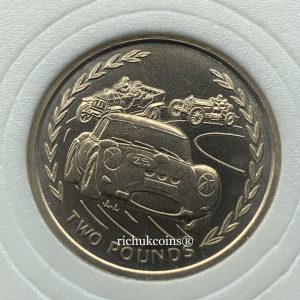





Which one from above is more hard to find out as a collector’s item among £2 coins they issued in 1997. Of course, it is the virenium ones. First, there is a clear clue that a virenium £2 coin and a large type of 50p coin together were originally slabbed in the 1997 decimal coin mint set. Secondly, a virenium £2 coin can only be seen from a mint set as all circulated ones eventually were recycled. Thirdly, a virenium £2 coin and a large 50p ND DF from 1996 became aware of them in a 1997 mint set. The two 50p coins mentioned here (in diameter of 30mm) are sought-after collector items in a way that 1996 50p ND DF is for the 25th decimalisation anniversary.
The £2 virenium version coin you can find from our eShop on eBay, richukcoins®, or you can contact us if we come to a deal in a cheaper and direct way.
- 1997 decimal mint set coin with large 50p AA coin from 1997
- 1997 decimal mint set coin with large 50p ND DF coin from 1996




From the above pictures, your first impression would be that the 50p coins in centre position are sought-after (with no mintage limitation both). In reality, you are not going to see the 2-coin often. Somehow, the 50p coins in centre were also made in 3 different versions (i.e., two different AAs and ND for 1996, 2 larges and 1 small for 1997). Meanwhile, the £2 Virenium coin is originally slabbed in two different versions of year blister set, you have no doubt to say that it was issued in a small amount of number.
#The End
